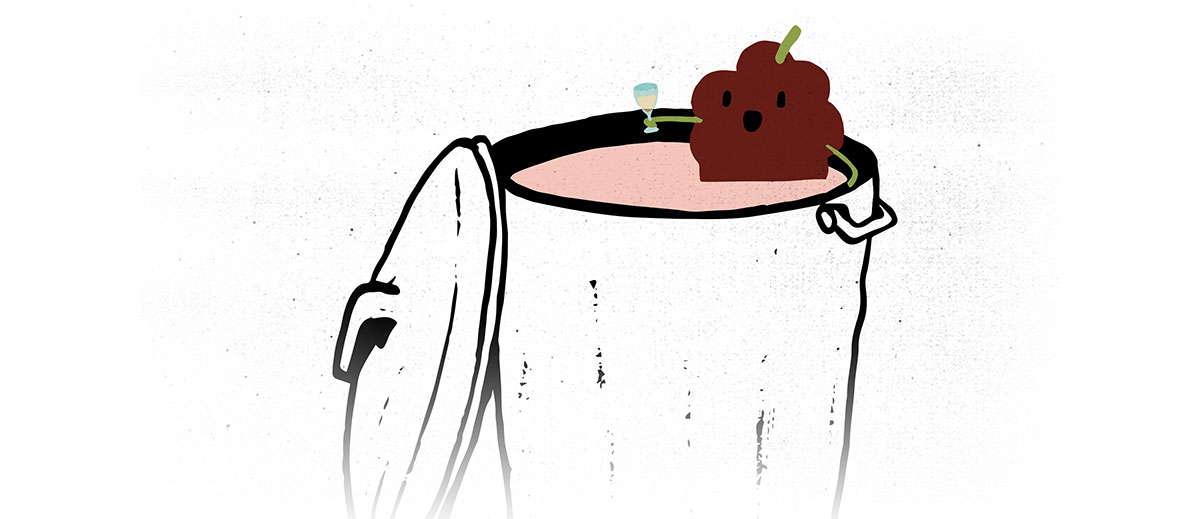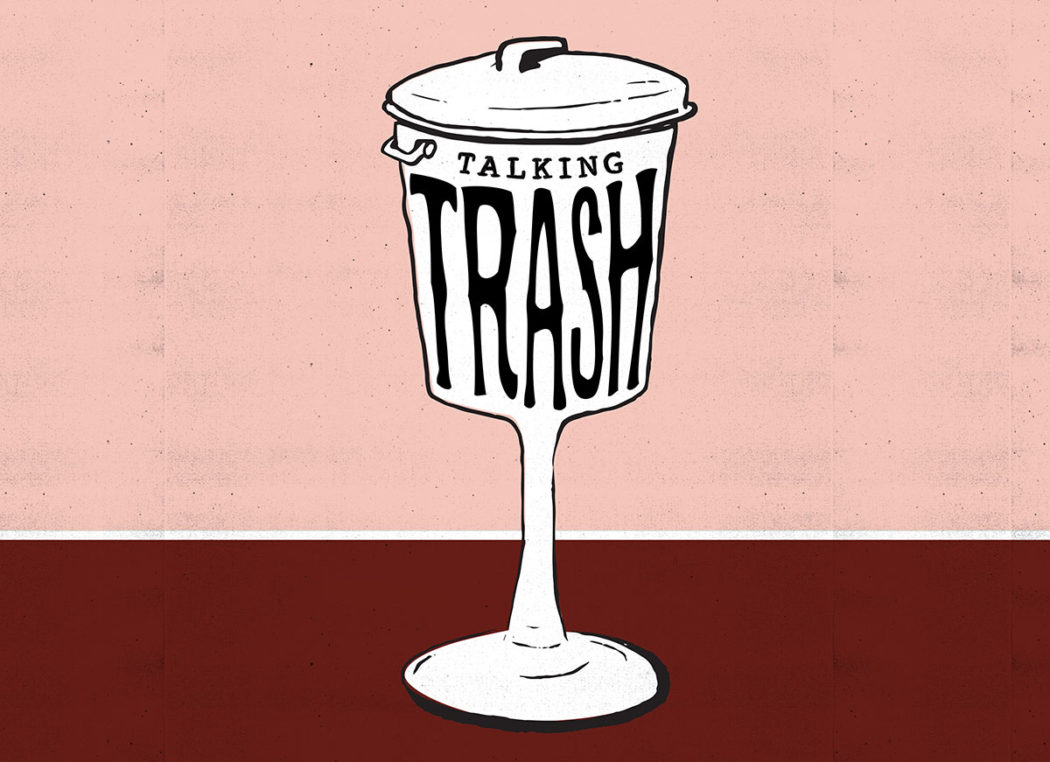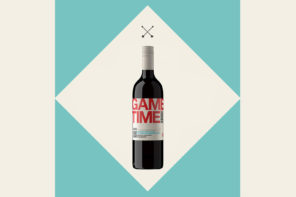There are no bad grapes.
By John Capone & Courtney Humiston
Some wine might be made badly—and that can happen to any grape really, just seems to happen to some more than others. But certain grapes and wines just have a bad reputation. And they deserve to be reconsidered when the time is right. The time is right.
White Zin
As anyone who has ever waited tables and had to call the sommelier over to explain, “No, madam, Cabernet Sauvignon is not Cabernet Franc and Sauvignon Blanc mixed together to make a rosé, but I see why you might think that,” knows—rosé is not a mixture of red and white wines. But in glorious 1970s America one rosé wine ruled the pink category (popularly called, in its sweeter form, blush) and ruined rosé for a generation. Zinfandel is a red grape variety that has long clusters with broad shoulders and big, juicy grapes. You can get a lot of juice—slash wine—off a zinfandel vine. Making it a great candidate for rosé, a wine which is made from red grapes but pressed like a white wine. White Zinfandel, which is a rosé made from zinfandel grapes, was created somewhat accidentally by Bob Trinchero of Sutter Home winery in California. The story goes that a stuck fermentation (when the yeast stops eating and converting sugar to alcohol) resulted in the winery bottling a sweet version of zinfandel rosé containing the sugar the yeast had left behind. They called the sweet, pink drink White Zinfandel and well, people loved it. While most of us still associate white zinfandel with the cheap candy-like wine still produced in high volume by Sutter Home and some others, some smaller, independent producers are attempting to reclaim the white zinfandel category sort of unironically by making dry and delightful pale pink wines from quality zinfandel grapes. Look for Broc Cellars, Turley and Carpenter for a few fine examples.
Lambrusco
You are not to be blamed if the word “Lambrusco” brings to mind sweet purple fizz that resembles corner store wine with Pop Rocks tossed in it. Turns out though, it’s your fault. The good people of Emilia-Romagna did not always make their wine in this style, but some clever market researcher in 1970-something told them sugar was the key to the American heart (and stomach). To quote the famous Italian chef Lidia Bastianich, “Lambruscos have been misrepresented by industrial versions that have the soda pop flavors they think Americans might want.” However, within this family of grapes and the wines made from them, which hail from Emilia-Romagna (home to rich foods like prosciutto, mortadella and Parmigiano di Reggiano), are made in an entire spectrum of styles from light, fresh rosé-like wine made from the grape Lambrusco di Sorbara to the dark, earthy tannic wines of Lambrusco Grasparossa.
Prosecco
Prosecco is a region in the Veneto in Northern Italy known for a specific style of wine made predominantly from the grape variety Glera. If you are operating under the informed opinion that Prossecco tastes like key limes and tire pressure and is best suited for mimosas, that’s understandable. There is much of that in the world. In 2009, to keep up with international demand of inexpensive fizz, Italy expanded the geographic boundaries of Prosecco to include most of the Veneto, which substantially increased output and, perhaps just as substantially, lowered quality. To make up for it, the powers that be elevated the status of wines from Prosecco di Conegliano-Valdobbiadene—high hillside vineyards at the heart of the region—from DOC to DOCG status (the equivalent of going from Drake’s stamp of credibility to Snoop Dogg’s). These wines deliver more complexity and flavor than their commercialized counterparts and are worthy of enjoying without the OJ.
Moscato
Moscato (or muscat) is neither a grape nor a region but rather a large group of grape varieties that range in colors from white to black and are made in a variety of styles across all of Italy and the world. While Moscato d’Asti is the wine that may come to mind (an effervescent and aromatic off-dry wine), don’t let that define any wine with the word moscato attached. You could just as well get a dry rosé-colored wine or a dark red, sweet dessert wine… all made from some type of moscato. Rather than verse yourself in every wine and region and style and perform qualitative systematic quality analysis, maybe just keep an open mind?
Pinto Grigio
When Aunt Nancy clacks her bangles holding up her goblet and rasps for another glass of that “peeno greezzh-eee-o” you might not be running to fill your glass with the same thing. But, the thing is, it’s not bad. Probably often not great either. Pinot grigio is, and rightfully so, the wine of choice for many when what they want is a dry, white wine. At a dive bar or a wedding or on an airplane—when there aren’t a lot of great options, just shrug and order a pinot grigio. It will do. But like the other wines in this lineup, the grape used, which is not pinot grigio but rather pinot gris, is not to blame for this innocuous wine. Pinot gris, which is a mutation of the noble red grape pinot noir and is slightly pink or ‘gris’ as in grey en francais, can be quite expressive, indeed. Look for wines labeled pinot gris to get to know this grape a bit better. Or just keep enjoying the more innocuous version with Aunt Nancy.
Why Zinfandel is the Pizza of Wine

Zinfandel may just be the pizza of grape varieties. Not saying that zinfandel has pepperoni on it or that a glass of it goes perfectly with some melted mozzarella and tangy tomato sauce with lots of oregano (it sure does though). But they are kindred spirits. Each of them is always pretty good, sometimes sublime. Zinfandel is just straight-up fucking full-bodied, fruity deliciousness. Mouth-filling with relatively high alcohol (does the trick), but not especially nuanced or complicated. Just as even crappy pizza is pretty good and no pizza is the equivalent of sitting down for a meal at a Michelin-starred restaurant, no Zinfandel is going to reach the heights of Château Petrus. Big, ripe obscenely voluptuous California Zinfandel grapes have their Italian antecedents (looking at you Monica Bellucci), same as your large pie from Joe’s can trace its roots to Naples. If you are in the mood for a solid, no-fuss glass of red wine, Zinfandel is there just as reliably as the corner slice. And when pizza wants to get a little fancier and somebody adds artichoke and goat cheese on a sourdough crust, you may call it flatbread. Zinfandel, for its air of intercontinental sophistication, sometimes masquerades as Primitivo, and mentions its Eastern European ancestry and twirls the end of its mustache.











